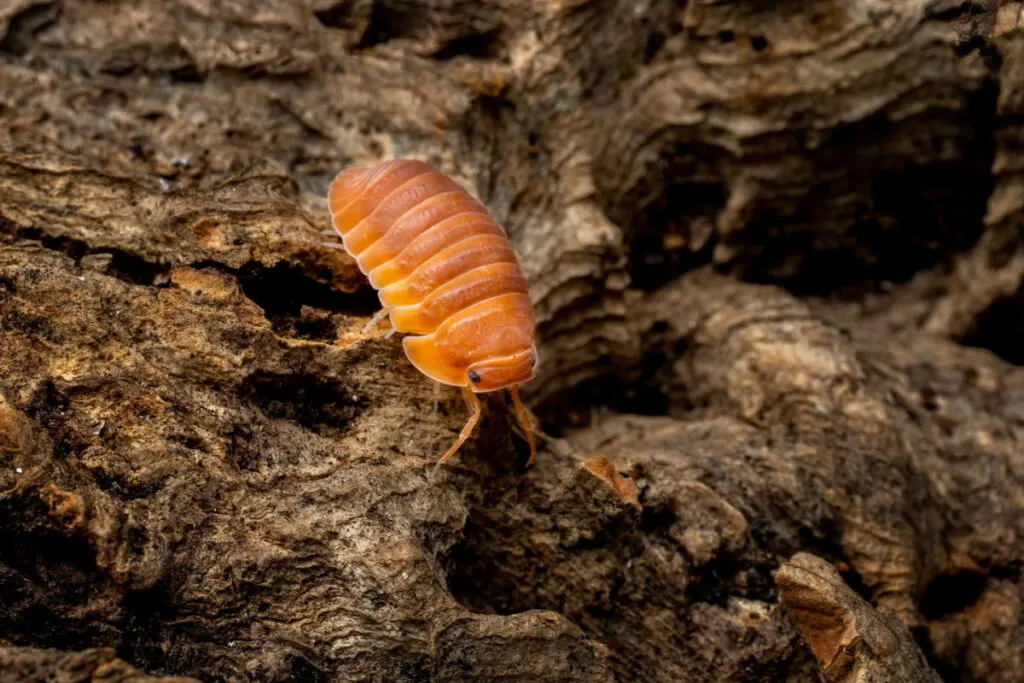If you ever wander around your backyard or garden, chances are, you have found a sow bug or woodlouse under old bricks, wooden planks, dead plants, and in other moisturized environments.
These tiny crustaceans aren’t your typical bugs. They are one of the many members of the order Isopoda. By general definition, isopods are backboneless crustaceans that inhabit any freshwater, marine, and land.

Table of Contents
How Do Isopods Reproduce?
Isopods begin to reproduce in the spring, especially during warm weeks. They reach sexual maturity at around 12 weeks and breed at least once or twice per year.
Female isopods will mate with males in a receptive period. To form a pair, females release aggregate pheromones to attract potential mates. Then, the males will follow females around to mate and release their sperm.
Male isopods generally have two joined penises, of which the second pleopod collects semen before releasing the sperm into the female’s gonopore. Meanwhile, female isopods produce eggs in a chamber called the marsupium, which can be found beneath their thorax.
No matter what species the isopod is, their egg pouch will always be filled with water. On average, they can bear around 200 eggs per breeding cycle.
Mancas will live inside their mother’s pouch for six to seven weeks before coming out into the world. Some will live inside the same burrow for a while and others may venture out and dig themselves new burrows.
Young isopods generally stay inside their burrows until their outer shells have fully hardened. Once they have completed enough molts, they can safely leave their burrows and be ready to produce after reaching the age of two to three months old.
During their lifespans, adult isopods will shed their exoskeletons several times to compensate for the increase in their body sizes. They will also eat their shed shells, which are rich in nutrients.
Isopods spend most of their adult life hiding beneath dead plant matter and leaf litter.
As long as the moisture and the humidity level are high, they can live comfortably in that environment. But in areas with lower humidity, isopods will spend more time sheltering to avoid loss of moisture.
Can Newborn Isopods Die Early?
Although isopods generally live at least two years, there is still a probability of early mortality when they are juvenile or right after the eggs hatched. Here’s why:
- Newborn isopods don’t have hard exoskeletons to protect their internal organs from external force. Hence, they are prone to crush injuries.
- Baby isopods face greater threats of being killed by predators. Unlike adult isopods, they can’t roll their bodies into a tight ball as protection.
- Newborn isopods can also starve to death, especially in an environment with other isopods that greatly increase the competition for feeding resources.
- Baby isopods are much more sensitive to changing moisture and temperature than adult isopods.
What Is the Best Habitat for Breeding Isopods?
If you’re looking to breed your own isopods, all you need is a substrate layer and a plastic container. Any type of substrate can be used including sand and potting soil, provided that they are clean and free from any outside pollutants.
The container should also be placed in a sheltered area, away from direct sunlight and heat. If possible, try to maintain the surrounding temperature between 59° and 67°F (15-19°C).
Fill the container halfway with soil and sand, alternating one layer with another to create a stable base. Then, collect some dried leaves or dead tree bark and place them inside the container. Be sure to dry the leaves and tree bark first to kill any bacteria or microorganisms that can harm the isopods.

You should also check for signs of chemical substances or pesticides found on the leaves before placing them in the container. Then, mist the leaves with filtered water before layering them over the dirt.
Creating a damp environment is important in creating a sustainable environment for the isopods. However, avoid adding too much water to the substrate. This can induce mold growth. Use a spray bottle and keep the container free from stagnant or a pool of water.
Maintaining their enclosure is fairly simple. Keep adding new dried leaves whenever you see any changes in the volume of the leaf litter and mist them once a day to retain the moisture at an optimum level. Finally, change at least half of the substrates every 4 to 6 months.
Final Thoughts
Although isopods don’t live as long as any other crustaceans, they are definitely unique creatures that play an important role in our natural ecosystem.
If you’re looking to keep and maintain isopods, all they need are a moist or humid environment and regular feeding. As long as you keep their habitat free from any bacteria or harmful substances, they require minimal care and won’t give you any major problems.
Citations
- https://sciencing.com/do-oysters-reproduce-5171373.html
- https://www.animalfoodplanet.com/how-long-isopods-live/
- https://www.neherpetoculture.com/isopodcare
- https://www.geneseo.edu/~beary/BearyPrimary/Isopod%20care.htm
- https://www.carolina.com/teacher-resources/Interactive/care-guide-terrestrial-isopods/tr10554.tr
- https://oceanexplorer.noaa.gov/facts/isopod.html
